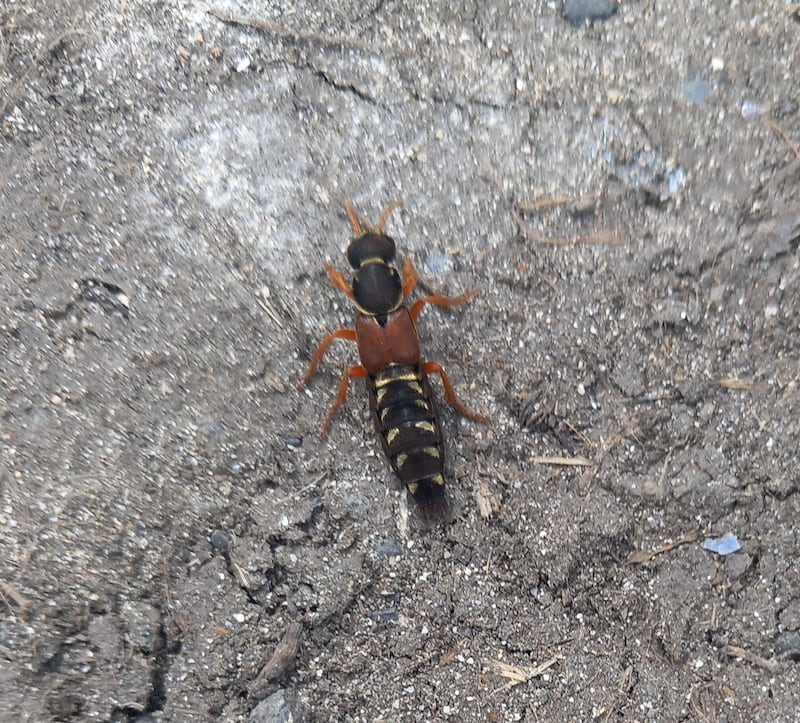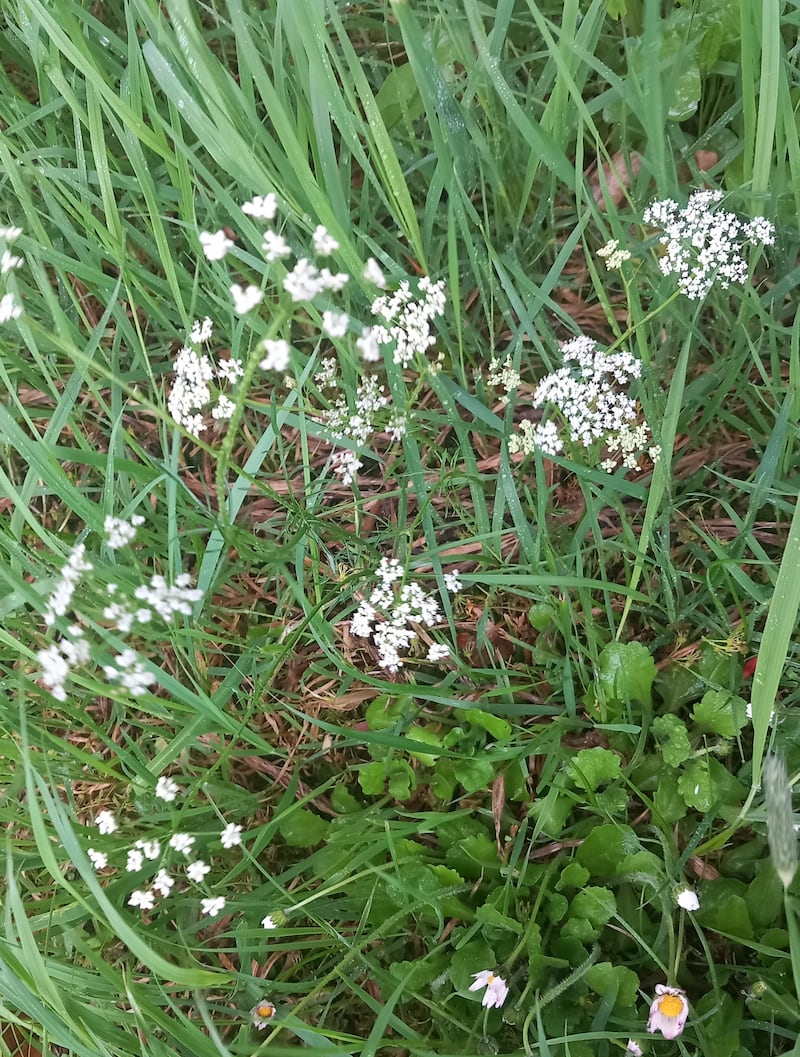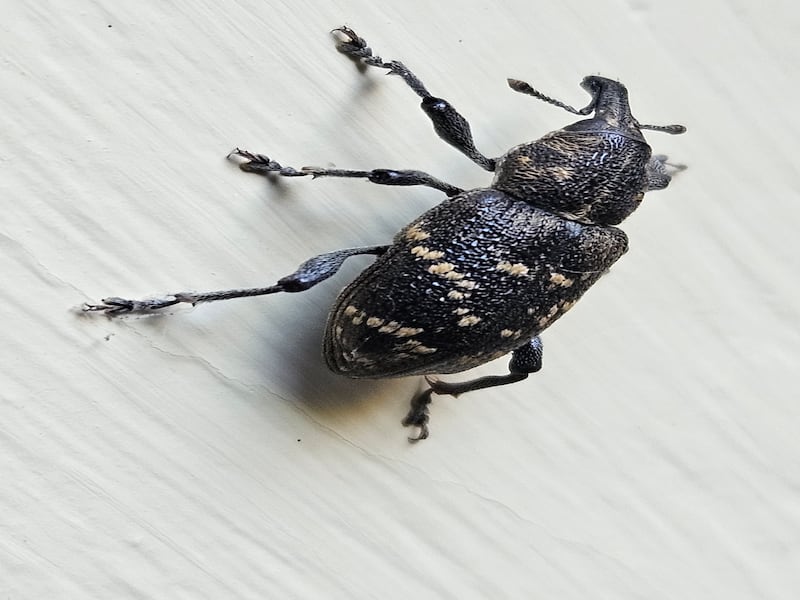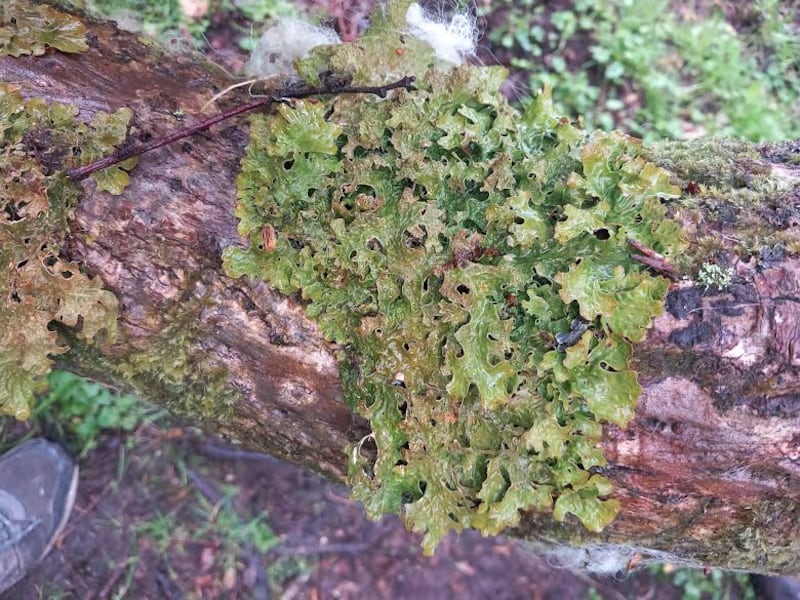I thought I’d share this photo of an ermine moth sunning itself in my garden at the beginning of May. - Margaret Quigley, Co Cork
And why not? It is a lovely creature. We have several species of ermine-type moths. This one is actually a muslin moth, a close relative of our white and buff ermines, which has far fewer spots than the ermines. The hairy brown caterpillar feeds on nettles, dandelions, plantains and stitchworts.

I came across two of these beetles at the carpark beside Thallabawn strand in Co Mayo in the middle of May. They quickly separated on my approach, and one cocked up its tail slightly – in the manner of the devil’s coach horse beetle. But these were much smaller and had completely different coloration. What were they? - E Maloney, Dublin
They are rove beetles – the same group that the devil’s coach horse belongs to. This one is Staphylinus caesareus. They tend to inhabit open grassland and moorland, especially on hillsides exposed to the sun, so you would wonder how these survived such a wet spring in west Mayo. Adults occur year-round, peaking in abundance from May until July, and they are active over a long season from early spring. They predate fly larvae and so are often associated with dung and carrion, but they also occur among compost and leaf-litter. They are generally only rarely encountered, but adults may sometimes be seen running on pathways. This seems to be the first Irish record in recent times.
READ MORE

What is this delicate umbellifer, which was growing quite abundantly in an old disused graveyard in Co Galway? I am familiar with the cow parsley that is currently flowering abundantly along the roadsides, but this is smaller and even more elegant. - Catriona Hand, Athenry, Co Galway
It is pignut, Conopodium majus, which belongs to the umbellifer family, as does the cow parsley. It is a common plant of woodlands, and grasslands and it has tubers on the roots that are edible and indeed can be eaten raw. If you ever wondered how “We go gathering nuts in May”, this is the answer. The “nuts” were pignuts, which were gathered as a valuable addition to the diet.

I spotted this weevil while visiting the North recently. Can you help me identify it and tell me a bit more about it please? - John Duncan, Ballymoney, Causeway Coast and Glens, Co Antrim
This is the large pine weevil (Hylobius abietis), which can cause very substantial tree plant mortality to conifer trees on reforestation sites. Felling a coniferous crop produces a large increase in breeding material for the pine weevil, which can attack and even kill young trees used for restocking. The period during which plants remain vulnerable to damage varies considerably. Typically, after two growing seasons sitka spruce will no longer be susceptible to damage while Douglas fir remains susceptible for several growing seasons.

The trees in the woodlands at Old Head near Louisburg, Co Mayo are covered in lichens such as old man’s beard and parmelia, as well as lots of mosses. But this looks neither like a lichen nor a moss. It was growing on birch as well as on the oak trees. - S O’Toole, Co Donegal
It is indeed a lichen - lungwort, Lobaria pulmonaria. It only grows on trees in ancient forests and woodlands and Old Head woodland is very ancient indeed. It is an indicator of very clean, unpolluted air. Ancient woodlands are biodiversity hot spots, and this woodland is a Special Area of Conservation. Because of the age of the trees and a very moist microclimate, it also has a particularly rich bryophyte (moss) flora. Such habitats are now exceedingly rare - and so too is this lichen.
[ If this lichen is growing in your area, it means the air you breathe is cleanOpens in new window ]
Please submit your nature query, observation, or photo with a location, via irishtimes.com/eyeonnature













